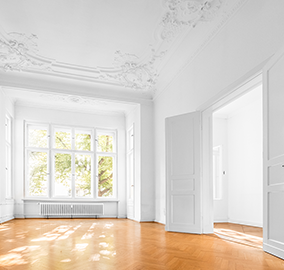Have you ever had a question about real estate and struggled to find the answer?
Perhaps you Googled the question and got inundated with hundreds of pages of content, much of it unhelpful. Or, maybe you asked friends and neighbours and received conflicting answers.
It can be frustrating – especially when all you really want is an answer that’s accurate and relevant. For example, you might be wondering, “How much are homes going for in this area?”
The good news is, there is a source of information available that you’re going to find very helpful.
Me!
I have the latest data and insights into the local real estate market. So, when you have a question, I can usually get back to you with an answer that will be up-to-date and useful.
You don’t have to dig for information and then worry about whether it’s correct. Give me a call. I’m happy to provide you with the facts and advice you need.
 Buying an older property definitely has its advantages. The neighbourhood will already be well-established, so you’ll be able to get a sense of the community. The trees will be grown. The area will have a defined character. This combination of an older home and established community may be something you like, or even love.
Buying an older property definitely has its advantages. The neighbourhood will already be well-established, so you’ll be able to get a sense of the community. The trees will be grown. The area will have a defined character. This combination of an older home and established community may be something you like, or even love.
Perhaps you Googled the question and got inundated with hundreds of pages of content, much of it unhelpful. Or, maybe you asked friends and neighbours and received conflicting answers.
It can be frustrating – especially when all you really want is an answer that’s accurate and relevant. For example, you might be wondering, “How much are homes going for in this area?”
The good news is, there is a source of information available that you’re going to find very helpful.
Me!
I have the latest data and insights into the local real estate market. So, when you have a question, I can usually get back to you with an answer that will be up-to-date and useful.
You don’t have to dig for information and then worry about whether it’s correct. Give me a call. I’m happy to provide you with the facts and advice you need.
What to Watch for when Viewing an Older Home
 Buying an older property definitely has its advantages. The neighbourhood will already be well-established, so you’ll be able to get a sense of the community. The trees will be grown. The area will have a defined character. This combination of an older home and established community may be something you like, or even love.
Buying an older property definitely has its advantages. The neighbourhood will already be well-established, so you’ll be able to get a sense of the community. The trees will be grown. The area will have a defined character. This combination of an older home and established community may be something you like, or even love.However, when you’re viewing an older home for sale, there are a few extra things you need to be sure to check. Here are the most important:
Needed replacements. Nothing lasts forever. In any home, there are items that will eventually need to be replaced. The most common include roofing shingles, furnace, water heater, air conditioner, windows, deck, and fencing. When viewing an older property, ask about the age of each of these items. You’ll get an idea of probable upcoming replacement expenses.
Building issues. Homes were built differently decades ago than they are today. So, there may be issues that need to be addressed by a new owner. Some can be serious, such as water leakage and structural problems. Others, less so, such as old electrical outlets that need to be updated. If there are issues like these, they’ll likely be identified during the professional home inspection.
Drafts. Drafts are common in older homes. Of course, that doesn’t mean they shouldn’t be fixed. Even modest infiltration of air through an old window or door with worn weatherstripping could add hundreds of wasted dollars to your energy bill each year. Look for signs of drafts when viewing a home.
The good news is, the overwhelming majority of these issues can be fixed easily. Don’t let them dissuade you from buying an older home you otherwise like.
 The risks and benefits of data collection may be incomprehensible to most children, but it’s important for them to know that information about them is constantly being collected from their smartphones. Therefore, even children need to be thoughtful about what facts and images they choose to share, as they build a digital footprint throughout the course of their lives.
The risks and benefits of data collection may be incomprehensible to most children, but it’s important for them to know that information about them is constantly being collected from their smartphones. Therefore, even children need to be thoughtful about what facts and images they choose to share, as they build a digital footprint throughout the course of their lives.
Building issues. Homes were built differently decades ago than they are today. So, there may be issues that need to be addressed by a new owner. Some can be serious, such as water leakage and structural problems. Others, less so, such as old electrical outlets that need to be updated. If there are issues like these, they’ll likely be identified during the professional home inspection.
Drafts. Drafts are common in older homes. Of course, that doesn’t mean they shouldn’t be fixed. Even modest infiltration of air through an old window or door with worn weatherstripping could add hundreds of wasted dollars to your energy bill each year. Look for signs of drafts when viewing a home.
The good news is, the overwhelming majority of these issues can be fixed easily. Don’t let them dissuade you from buying an older home you otherwise like.
Kids Need to Understand Personal Data
 The risks and benefits of data collection may be incomprehensible to most children, but it’s important for them to know that information about them is constantly being collected from their smartphones. Therefore, even children need to be thoughtful about what facts and images they choose to share, as they build a digital footprint throughout the course of their lives.
The risks and benefits of data collection may be incomprehensible to most children, but it’s important for them to know that information about them is constantly being collected from their smartphones. Therefore, even children need to be thoughtful about what facts and images they choose to share, as they build a digital footprint throughout the course of their lives.In other words, they need to know that data collection is about more than tracking their progress when they play their favourite games.
The choices, interests and “likes” kids express on their smartphones will be used to predict their behaviour, and ultimately entice them to buy things, even when they don’t need them. They will be bated with cleverly masked offers that seem completely legitimate. What starts with a simple pop culture reference can eventually become a “phishing” scheme to collect personal information about a user, and eventually create a phony persona that can actually ruin a child’s credit rating. Surprisingly, this can be difficult to reverse. So, if kids are old enough to use a smartphone, they must be old enough to establish strong passwords, and to practice cyber-safety 24/7.
Beware of Over-Downsizing or Over-Upsizing
When it comes to size, buying a new home can be trickier! Whether your intention is to upsize or downsize, figuring out the right size can be especially challenging.
Say for example, you’re downsizing from a large two-story home to a smaller bungalow. You don’t want to underestimate the space you need and end up in a place that feels tight. If you’re going the other way and upsizing, you don’t want to end up sinking extra money into a property that’s larger than you really need.
Beware of Over-Downsizing or Over-Upsizing

Buying a new pair of shoes is relatively easy. Once you find the style you like, all you need to do is try them on and see if they fit. If they do, you go to the cash register and pay.
When it comes to size, buying a new home can be trickier! Whether your intention is to upsize or downsize, figuring out the right size can be especially challenging.
Say for example, you’re downsizing from a large two-story home to a smaller bungalow. You don’t want to underestimate the space you need and end up in a place that feels tight. If you’re going the other way and upsizing, you don’t want to end up sinking extra money into a property that’s larger than you really need.So how do you avoid these scenarios?
One of the best ways is to start by considering your current home. Do you use all the rooms in your home regularly? Is there a bedroom that’s rarely occupied? Has the recreation room become simply a storage area? If you’re downsizing, subtracting rooms you scarcely use can give you a better idea of what you need in a new home.
One of the best ways is to start by considering your current home. Do you use all the rooms in your home regularly? Is there a bedroom that’s rarely occupied? Has the recreation room become simply a storage area? If you’re downsizing, subtracting rooms you scarcely use can give you a better idea of what you need in a new home.
Upsizing is a bit more challenging because you have to anticipate what you will need in the future. For example, if you have young children, and your place is feeling cramped, then a home with a recreation room or separate family and living rooms may be a good idea. You may also need a bigger kitchen with a spacious eating area (in addition to a separate dining room.) Think about the extra room you’ll need and how you’ll use that space.